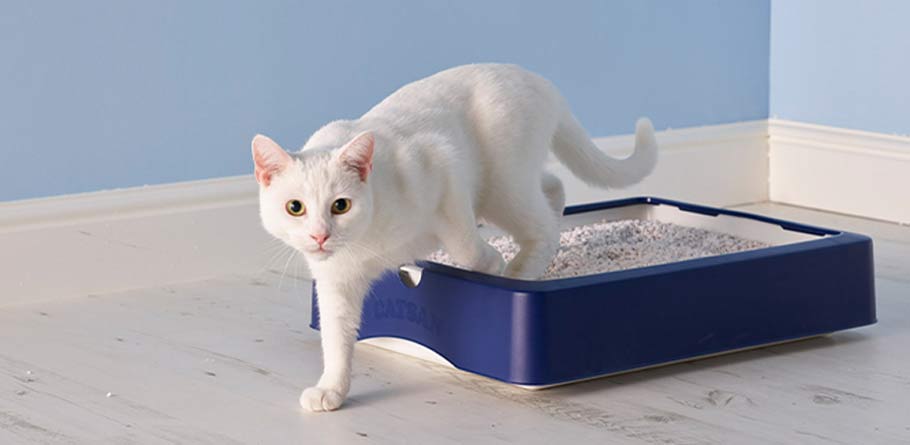Cat litter box training is an essential aspect of cat ownership. A properly trained cat will instinctively use a litter box, providing convenience for both you and your furry companion. However, training a cat to use the litter box can sometimes be a challenging process. In this comprehensive guide, we will explore a variety of tips and techniques to help you successfully train your cat to use the litter box. From choosing the right litter box to addressing common training issues, we’ll cover it all. Let’s embark on this journey to ensure a harmonious and hygienic living space for you and your feline friend.
Selecting the Perfect Litter Box
When it comes to cat litter box training, selecting the right litter box is crucial. Here are some tips to consider:
Size Matters
The size of the litter box plays a significant role in your cat’s training success. Consider the following factors:
- Choose a litter box that is large enough for your cat to comfortably move around and dig.
- If you have a kitten, ensure the sides of the litter box are low enough for easy entry and exit.
Covered or Uncovered Litter Box?
Deciding between a covered or uncovered litter box can influence your cat’s preference and overall litter box experience. Take into account the following considerations:
- Covered litter boxes offer privacy and can help contain odors.
- Uncovered litter boxes provide a more open and accessible environment for your cat.
Placing the Litter Box
The location of the litter box plays a vital role in training your cat effectively. Consider the following tips:
Accessibility and Privacy
Choose a location that is easily accessible for your cat but also provides privacy. Keep the following in mind:
- Avoid placing the litter box near noisy appliances or in high-traffic areas.
- Ensure the litter box is away from your cat’s food and water bowls.
Multiple Litter Boxes
If you have a large home or multiple floors, it’s beneficial to have multiple litter boxes. Consider these points:
- Place at least one litter box on each floor to make it convenient for your cat.
- Having multiple litter boxes reduces the chances of accidents and encourages consistent litter box usage.
Introducing the Litter Box to Your Cat
Properly introducing the litter box to your cat can significantly impact their training progress. Follow these steps:
Gradual Introduction
To ease your cat into using the litter box, introduce it gradually. Here’s how:
- Place the litter box in a quiet and easily accessible location.
- Show your cat the litter box and allow them to investigate at their own pace.
- Gently place your cat in the litter box after meals or naps to encourage familiarity.
- Praise and reward your cat with treats or gentle strokes when they use the litter box.
Encouraging Positive Association
Create a positive association with the litter box to entice your cat to use it consistently. Consider these tips:
- Use a litter substrate that your cat prefers. Experiment with different types (clay, clumping, or natural) to find their preference.
- Clean the litter box regularly to maintain hygiene and minimize odors.
- Avoid using harsh chemicals or strong-smelling cleaning agents, as they may deter your cat from using the litter box.
Troubleshooting Common Litter Box Issues
Sometimes, cats encounter difficulties with litter box training. Here are solutions to common problems:
Avoiding Litter Box Aversion
If your cat is avoiding the litter box, it may indicate an underlying issue. Address these concerns:
- Ensure the litter box is clean and odor-free.
- Rule out medical issues by consulting with a veterinarian.
- Avoid sudden changes in the litter type or location, as they can cause aversion.
Managing Accidents Outside the Litter Box
Accidents can occur during the training process. Follow these steps to manage accidents effectively:
- Clean up accidents promptly using an enzyme-based cleaner to eliminate odors.
- Place a litter box in the area where your cat frequently has accidents.
- Gradually move the litter box back to its desired location once your cat consistently uses it.
FAQs
Here are some frequently asked questions about cat litter box training:
Q1: What if my cat refuses to use the litter box?
If your cat refuses to use the litter box, it’s essential to investigate the cause. Consider the following possibilities:
- The litter box may not be clean enough.
- There might be a health issue that requires veterinary attention.
- Your cat may be stressed or anxious.
Q2: Can I train an older cat to use a litter box?
Yes, it is possible to train an older cat to use a litter box. Follow the same steps as you would with a kitten, but be patient and consistent in your training efforts.
Conclusion: Cat litter box training is a fundamental aspect of cat ownership. By following the tips and techniques outlined in this guide, you can establish a positive litter box experience for your cat. Remember to select the right litter box, choose appropriate locations, and introduce the litter box gradually. Address any issues promptly and be patient throughout the training process. With time and consistency, your cat will become a litter box pro, ensuring a clean and harmonious living space for both of you.

